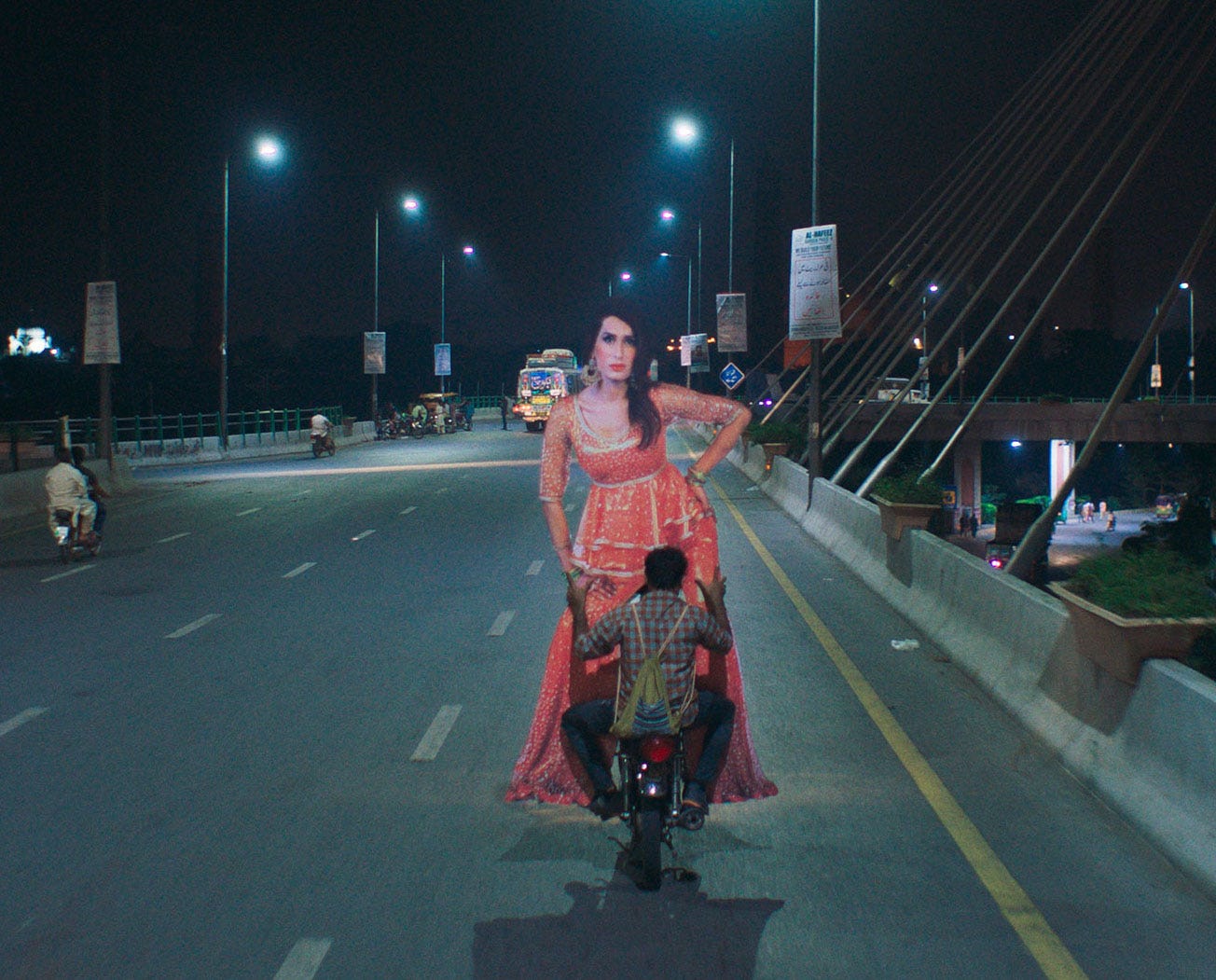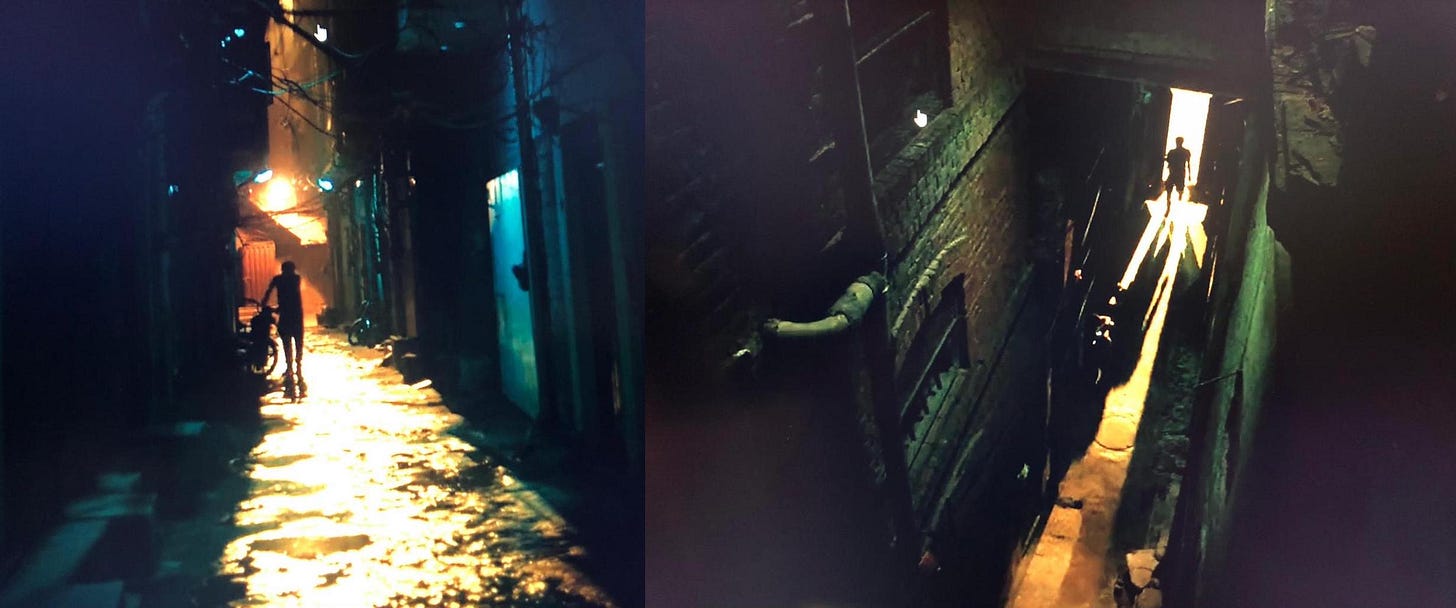Directed by Saim Sadiq
Pakistan & United States, 2022
So we are starting Season Two this week and we begin with a series of firsts: our first film from Pakistan, and the first Pakistani film to go to Cannes – picking up the Un Certain Regard jury prize and a 10 minute standing ovation (they do things like that in Cannes). It is also the first film we have reviewed to be banned in its country of origin*.
Joyland is the feature film debut of director Saim Sadiq. Set in Lahore it tells the story of a home where three generations of one family are living on top of one another. It opens with Nucchi – already mother of three daughters – announcing that her waters have broken. Having received confident confirmation that her fourth child will be a boy she is taken to hospital by her hapless brother-in-law Haider (Ali Junejo). There, disappointingly, she gives birth to a fourth daughter.
Haider’s domineering older brother arrives barking orders, but Haider has his mind on other matters. In a shot that could have been lifted from Shakespearean theatre, he watches stupefied as a striking woman walks out of the emergency room, her dress drenched in fresh blood. Haider really is hapless: in a conservative, patriarchal setting much to the derision of his hidebound, elderly father he has been relegated to a role as the family domestic while his confident and capable wife, Mumtaz (Rasti Farooq), earns the wage. Haider actually seems at ease with this role, playing the clown for his three nieces.
However, under continuing pressure from Abba, his crusty father (Salmaan Peerzada), as well as his hyper-masculine older brother he manages to come up with a job. He announces to his family that he is a stage manager in a local theatre, but that’s just the half of it. He is actually working in an erotic theatre and the job? A background dancer in a burlesque act led by Biba, a statuesque transgender woman – the very woman he saw striding out of the hospital. Can Haider dance? Well no, not really, but in a highly charged scene on a city rooftop Biba instructs him to remove his shirt, and this is the spark of Haider’s liberation – and not only as a dancer.
Rooftops are important scenes of escape in Joyland. In one laugh-out-loud scene a neighbour is appalled to find a 10 foot cut-out figure of Biba that Haider has hidden on the roof of his family home – foreshadowing the overwhelming impact she will have on him and his life. Inevitably the couple falls in love, although it is not at all clear that Haider’s puppy-like devotion is really what Biba really wants or needs. Played by Alina Khan, Biba is a commanding presence here, readily reducing men to playful adolescents – although as we know it’s all too easy for that playfulness to spill over into ugly, naked aggression.
The director plays a neat misdirection here. We focus on the Haider-Biba dynamic at the film’s centre, as the impact of developments in the family’s story elsewhere, including one character’s silent descent into depression, catch us unawares.
So we have a film that takes on the oppression of the patriarchy, transphobia, and misogyny, but this is no ‘issues movie’. Sadiq lightly treads the line between tragedy and comedy and feels no need to hector his audience. He allows his pictures to tell the story and what pictures they are. Joyland is a sensuous film, saturated with colour. Green disco-ball lights swirl around Biba’s room in a celluloid magical realism. It is shot in a near-square 4:3 aspect ratio and Sadiq and his cinematographer, Joe Saade, fill that square with facial close-ups. This framing not only makes the domestic scenes feel even more claustrophobic, but also forces the characters together, whether they like it or not. The family ends up sharing each other’s beds. There is literally no escape...well almost.
That use of colour and light, the sense of theatricality – Sadiq is giving us a new Pakistan Cinema of the Baroque. Two scenes stand out: a lighting failure threatens Hydra and Biba‘s debut show, but it’s rescued by the audience illuminating the stage with their cellphones. And then Mumtaz and Nucci share a moment of ecstatic release on a fairground ride in the park that gives the film its title.
Where Sadiq really succeeds in this remarkable debut is to provide space that allows us to see all of the characters of his sprawling cast by their own lights, even an angry, rigid Abba. Increasingly frail and unable to look after himself, he clings to his remaining vestiges of control. In a painful scene he spurns the warmth of companionship offered the widow living next door. After all, what would the neighbours say? It is his daughter-in-law, Nucchi (Sarwat Gilani), who finally tears away this veneer of honour and respectability, in an angry denunciation of the family that speaks to wider traditional society.
There are no heroes or villains here. Sadiq shows us humanity in all of its awful yet joyful splendour.
I didn’t expect it to make me laugh so much … it’s dealing with serious subject matter but there are so many great moments of tension-breaking - C
* Joyland was banned after being declared ‘clearly repugnant to the norms of decency and morality’. Following popular support and some cuts by the censor, the film was released in Pakistan but remains banned in Punjab, the province where Sadiq grew up.
Reids’ Results (out of 100)
C - 79
T - 77
N - 82
S - 81
Thank you for reading Reids on Film. If you enjoyed it please share with a friend and do leave a comment.
Coming next … The Round-Up (1966)







